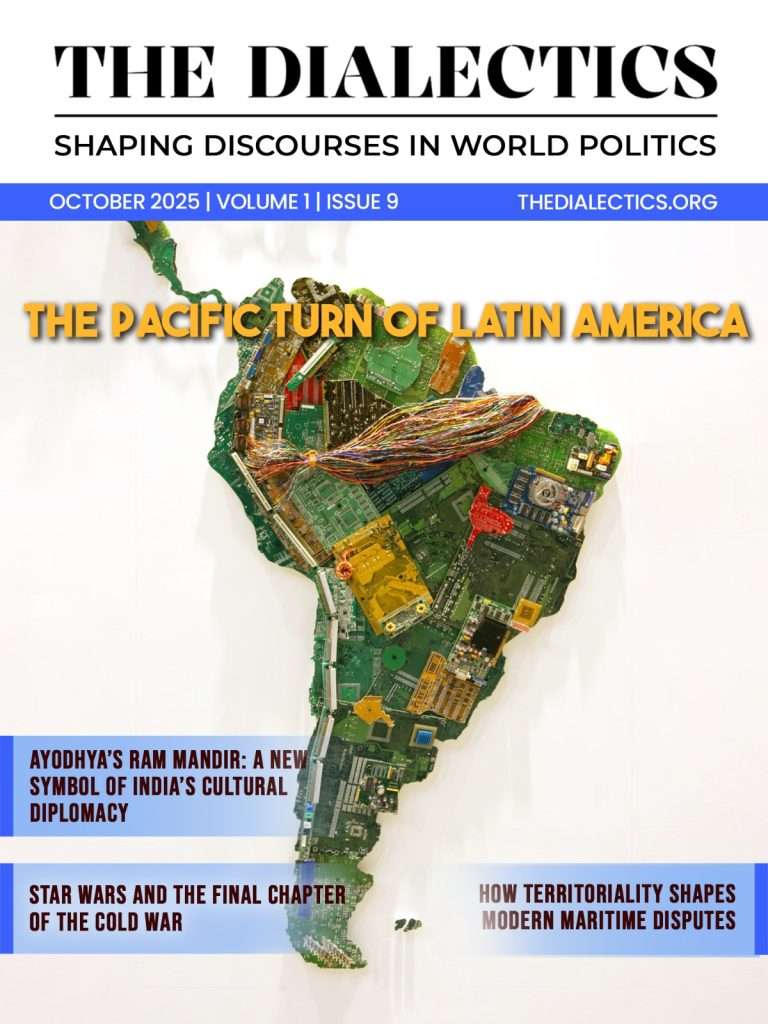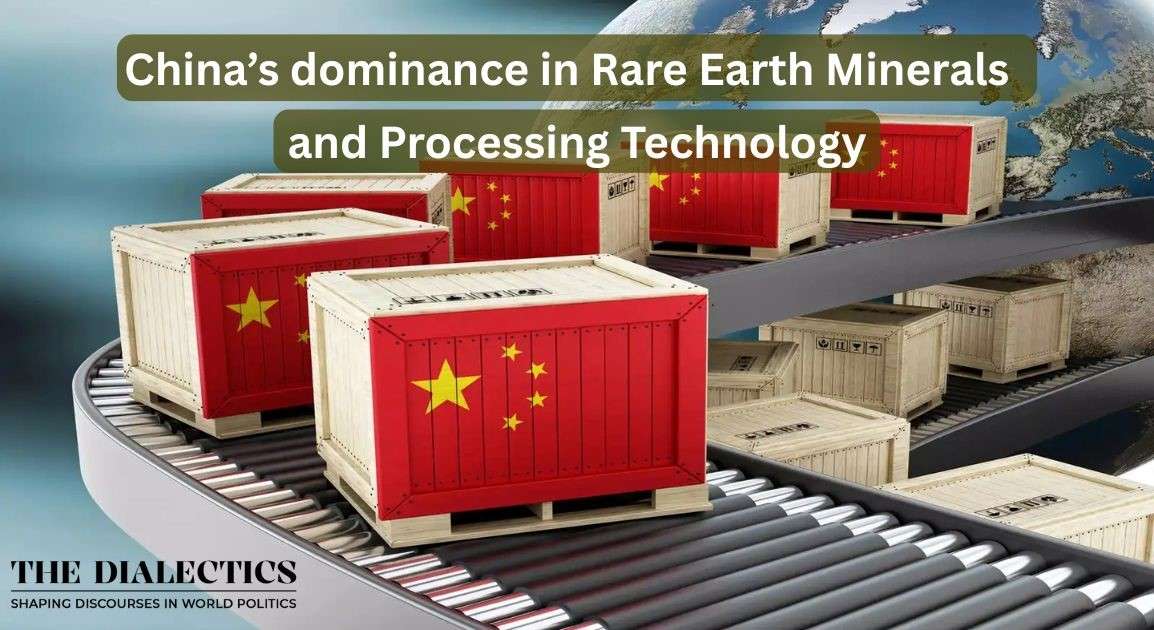The complexity around of Rare Earth minerals
The rare earth mineral became a buzz word in 2010 when China unofficially “halted” rare-earth exports to Japan because of their maritime dispute over Senkaku/Diaoyu Island in the East China Sea. This particular incident has sent ripples across the world and also came to realize the importance and their dependency on rare earth minerals. It also showed how access to such minerals can be used both as a tool for bargaining and as a potential weapon to exploit dependency. In addition, given the fact that a lot of industries are dependent on these minerals and its uneven global distribution adds to its strategic value.
As the world is making concerted efforts to achieve international climate targets, there is also an attempt to move beyond the usage of fossil fuel towards renewable energies and the global diffusion of low-emission technologies. These minerals are categorically categorised as “critical” by the industry experts and policy makers for not only their demand in green-energy technology but also given their economic and security importance; and the sophisticated way in which they are extracted and produced.
On the other hand, rare earth minerals are a distinct group among critical earth minerals. Both critical earth minerals and rare earth minerals are not geologically rare but the latter is erratically scattered which makes it economically unviable to be mined in segregation. Furthermore, rare earth minerals are extracted as a by-product of mining operations for other minerals and must be separated and purified via complex, energy-intensive and heavily polluting processes techniques. Most of the techniques used for mining rare earth minerals are reliant on carbon-intensive methods which does improve the purity of the mined mineral but produce environmental pollution.
Not so ‘Rare’ Earth
Rare earth minerals are called “rare” not because they are uncommon but are not found in economically viable deposits. They are also highly variable in their mineralogy and chemistry. As a result, the processing techniques require isolation and refining of each rare earth mineral has to be designed specifically for each deposit. Hence, the sole availability of rare earth minerals is not just enough. The state or the mining company needs to possess adequate mining, extraction and refining technology for the same to satisfy the demands of the domestic and global markets. Hence, this cumbersome cycle is characterised by a complex interdependence among availability of minerals, stages of production and technology.
Moreover, rare earth minerals comprise a group of 17 elements, the 15 lanthanides plus scandium and yttrium. They are broken down into two broad categories according to their atomic weight: light and heavy. Among the range of light rare earths, neodymium is considered to be valuable and critical. It is used for making mobile phones, electric cars, medical equipment etc. It is also used for the creation of permanent magnets, which are used in data storage systems and wind turbines. Praseodymium is another significant lightweight rare earth mineral. It is used in alloys with magnesium to form aircraft engines, and it also finds use in the film industry for studio lighting and other projects. Like many rare earth minerals, praseodymium plays a role in creating permanent magnets.
The heavy rare earth mineral is defined by their heavy atomic weight. They are less common and hence the demand and supply dynamics are skewed. That makes them typically more valuable than light weight rare earth minerals. The important heavy rare earth minerals such as dysprosium, yttrium and terbium play an important role in producing clean green technologies. Despite of the existing differences in terms of even resources distribution, complicated extraction process and market value among the lightweight rare earth mineral and heavy weight rare earth weight, both are equally important in global market irrespective of the atomic weight differences.
However, the demands for a particular sub-element of light and heavy rare earth minerals depends on the emerging market dynamics, refining technology, sustainable development and upsurge in green energy technology. For instance, the International Energy Agency (IEA) report in 2021 stated that “a typical electric car requires six times the mineral inputs of a conventional car, and an onshore wind plant requires nine times more mineral resources than a gas-fired power plant”.
Technique and Technology
Given the fact that rare earth minerals are not commonly found in all the critical minerals deposits and the each of light and heavy weight rare earth requires different separation and refining techniques and technologies, it is imperative to understand this vital stage. During the process of extraction of rare earth minerals, it goes through several stages of process such as- beneficiation (froth flotation, magnetic separation, electrostatic or gravity separation or a combination of these processes), chemical treatment, dewatering and electro-winning. Given the elaborate stages of refining, not every producer state has all the facilities to refine rare earth minerals. In addition, there are other important variables such as transportation infrastructure, cheap electricity, labour supply and environmental regulations which affect the overall outcome of this extensive process. The core of the competitive rare earth critical mineral industry depends on technological innovation.
Furthermore, the rare earth industry chain is divided into three parts. Each of the major three dominant streams such as – up-stream, mid-stream and down-stream demands a different set of processing technology. For instance, the up-stream mainly involves the extraction and smelting of rare earth resources and raw earth raw materials while the mid-stream involves the processing and purification of rare earth intermediate materials including rare earth alloys and oxides. The down-stream of rare earth minerals consists of permanent magnet materials, rare earth luminescent materials, rare earth catalysts, rare earth hydrogen storage materials and etc.
Chinese calculus
The Chinese innovation environment has the biggest driving force of technological innovation in the rare earth mineral industry. In this case, the presence of rare earth minerals resources along with acing technological innovation has acted as a boon for Beijing. It was way back in 1992 that the Chinese Premier Deng Xiaoping had identified the importance of rare earth minerals. He famously stated that “The Middle East has oil, China has rare earths”.
Baotou in Inner Mongolia is reputed to be “the rare earth capital” as it takes up the half of the national mining quotas set by China. Ganzhou is another “rare earth kingdom” that is located in the Southern Jiangxi Province. Furthermore, in early 2025, China discovered a super large-ion absorption-type-rare-earth mineral deposit in Southwest China’s Yunnan province that has a potential of reaching 1.15 million ton. It is expected to become the largest middle and heavy rare-earth deposit in China and further strengthen China’s strategic advantage in the field. It is believed that the area might contain praseodymium- exceeding 4,70,000 tons.
In response to the ongoing rivalry between the U.S. and China pertaining to the areas of critical minerals and semiconductors, in December 2022, China’s Commerce Ministry had prepared its “Catalogue of Technologies Prohibited and Restricted from Export” which categorically prohibited the export of technology used for permanent magnets. Moreover, on December 21 2023, China had announced the ban of rare earth extraction and separation technologies. The series of counter-policies in regard to export of technologies, China is exploiting its dominating position not only in regard to the possession of large reserves of rare earth critical minerals but also the fact that its dominate the global value chain– upstream, midstream and downstream. This entire global value chain covers mining, extraction, refining and processing.
It enjoys a near-monopoly status by controlling 60% of rare earth production, 60% of critical mineral production and about 80% of the downstream processing worldwide. From January to February 2025, China has exported 24, 827 tons of rare earths (up-stream). The second major limits on exports were announced by China on August 2024, according to which the export of gold-antimony were banned along with separation technology of the same. Furthermore, in the beginning of January 2025, China was planning to impose controls over the export of technologies used for lithium refining and battery chemical production.
Conclusion
Therefore, looking at the above-mentioned list of technology bans that China has continued to impose from time and again clearly indicates that Beijing has not only used the availability of rare earth minerals as a mere bargaining chip but also leveraged ban export of mining and related technology as a mechanism for self-assertion. In addition, China has also halted export of technology required for refining metals and making of permanent magnets. Since 2022 and particularly after 2023, these bans had a notable impact on the rare earth mineral supply chain capabilities outside China; as the latter possesses technical expertise in this arena while other states do not possess an edge over the same. This has created a vicious cycle of tech-dependence among other states and even if other states are to bring up an integrated system of separation, processing and manufacturing of rare earth minerals, it will take years to compete with China. Although the U.S., Japan and France have mineral separation technology, but Beijing has the top efficacy and a relative cost advantage.




